Managing human resources data may seem easy and straightforward when using spreadsheet tools in the beginning, but it will soon become very complicated and irritating as the size and number of files expand exponentially.
You may have a folder with files for general employee information, absent hours, salary calculation, performance appraisals, etc. The biggest concern with those spreadsheets is that when they are detached, processing those data by copying and pasting constantly or manually referencing visually becomes harder and harder as your company grows.
Although spreadsheet tools have improved the productivity of work compared to paperwork, they are still unsuitable for using it as a database. With them being difficult to build relationships, one may need to constantly copy and paste from leave request forms to the main data sheet when calculating absent hours, or one may need to constantly visually reference from the employee general information sheet manually when recording his or her data onto another form.
These actions are not only slow and inefficient but could also cause major mistakes that would then need more time and energy to patch.
In order to avoid those troubles, the best solution is to upgrade from using spreadsheets into a database system. And if you are already familiar with spreadsheets, then using Ragic to manage your data will be simple for you.
With Ragic, you are able to design and administer your own ideal database with no codes needed. Anyone can easily customize his or her own database just like creating new spreadsheets in Excel or other similar tools.
What’s better is that you can easily use the tools to build sheet relations, manage access rights, allow users to collaborate when using the Ragic database easily.
Furthermore, with Ragic, you may change the design of your database whenever and however you’d like without having any programming knowledge. This is something that you won’t be able to do when using a database software package.
To give you a big head start with HR management in Ragic, we already have related templates that you may download onto your database. These sheets are straightforward and easy to understand which you can start managing HR data right away. And if needed, you may still change the design of any sheet to meet the requirements of managing your data.
This post will walk you through four basic HR management sheet templates, including Employee Management, Timesheet, Overtime Claim, and Leave of Absence. In addition, we'll talk about how the Phone Book sheet (under the Administration category) was made. The Employee Management sheet is the centerpiece in the HR category, as all other HR sheets are linked to it. So regardless of what sheet you install from the HR category, the Employee Management sheet will be installed along with it. The latter three sheets can then be installed independently.
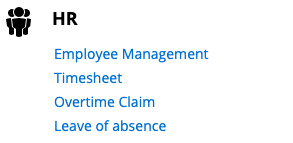
The data in these sheets should be added in the prescribed order below:
First, fill out the Employee Management form, then you can fill out the data in the Timesheet, Overtime Claim, and Leave of Absence sheets.
The design of our HR management system is built around the Employee Management sheet, which is used to manage all employee data. The sheet is split into four sections: employee information, contact information, work experience, and educational background.
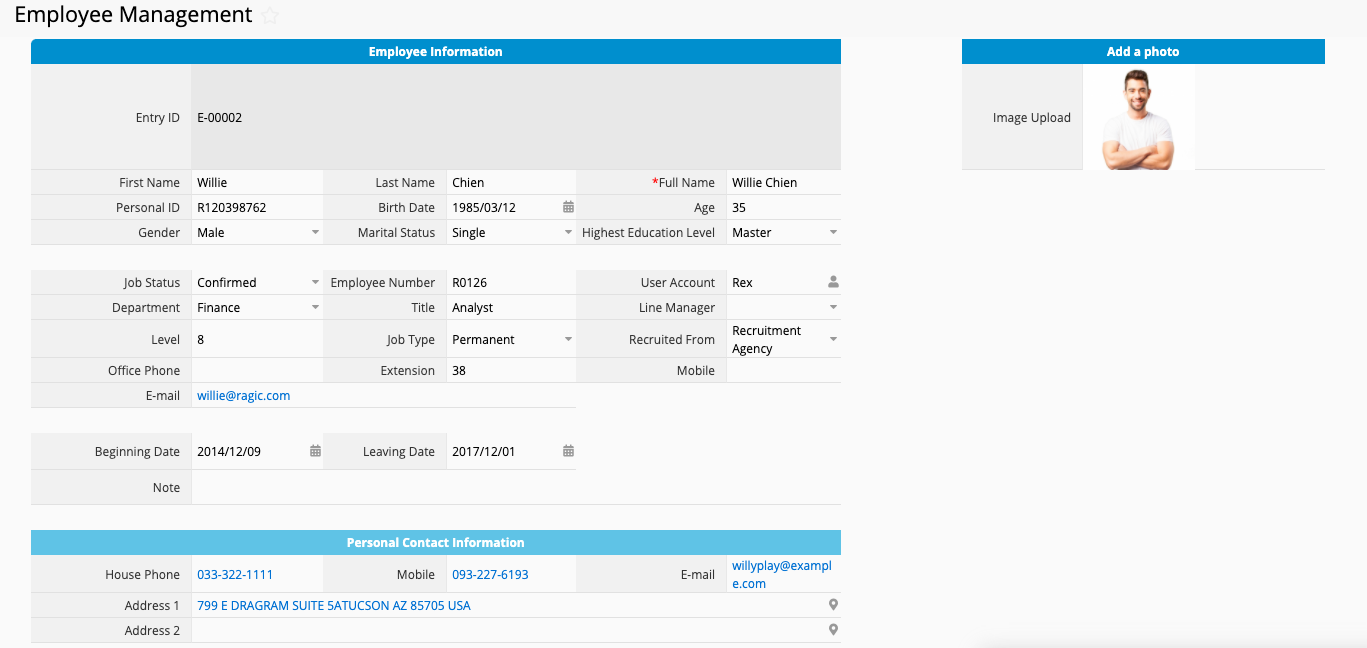
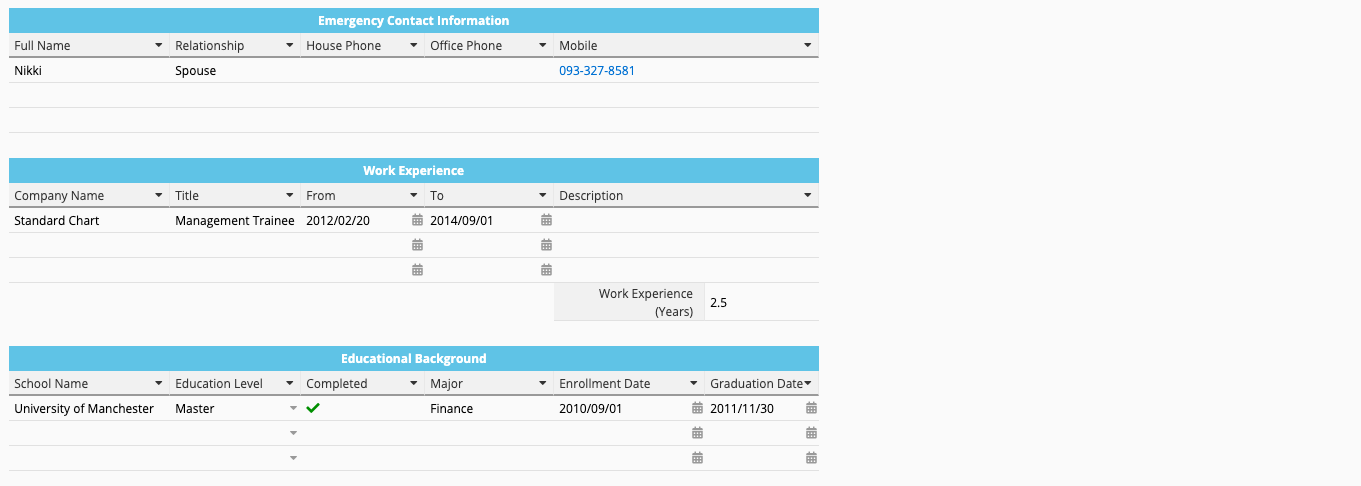
This sheet is basically an electronic employment information card and every field should be self-explanatory. If the fields don't match your company's needs, you can easily add or delete fields.
In subtable fields (of the emergency contact, work experience and educational background subtables), you can create one-to-many relationships with the employee data. For example, a single employee may have many different past jobs or schools.
This sheet is used to record employee work hours and is linked to the Employee Management sheet through the Entry ID field in the Employee Information area. Once the Entry ID is entered, the corresponding employee name, employee number, department, and title are filled in automatically, saving you the hassle of manually entering redundant data. The subtable at the bottom allows you to fill in the details of the employee work hours.
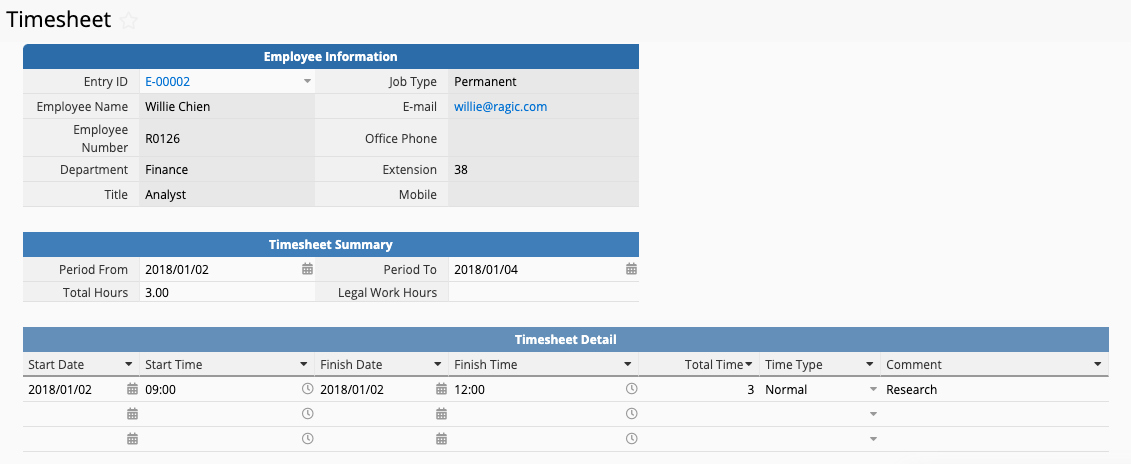
The Overtime Claim form works similar to the Timesheet, where you can have the form automatically fill in previously entered employee information in the blink of an eye! Also similar to the Timesheet, the subtable at the bottom allows you to enter the details of the individual's overtime hours.
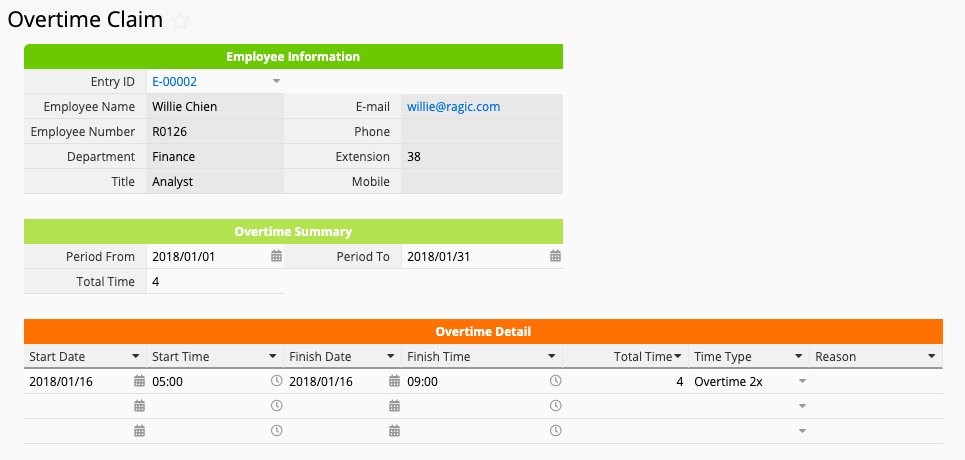
At the top of the Leave of Absence form, you can select the leave type. In the lower part of the sheet, selecting the Entry ID can again automatically fill in the employee information. The total hours field is automatically calculated by a formula based on the dates (and time) of the leave days, excluding lunch hours and weekends.
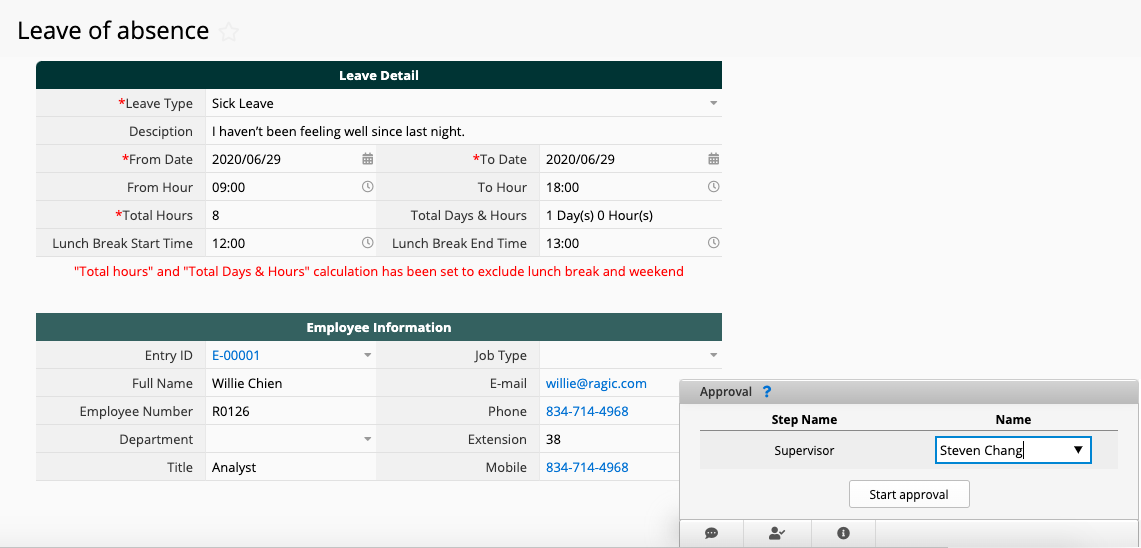
Once you have transferred all your data to Ragic, you can very quickly filter your data in the listing page. You can, for example, find the total leave hours taken by a particular employee or see how the staff in a particular department are taking their leaves at a glance, all with a few easy clicks.

If you want to subtract national holidays from the total hours in the Leave of Absence sheet, you can modify the parameters to the NETWORKDAYS function in the formula.
Since the dates of the national holidays differ every year, if you are using the NETWORKDAYS function in multiple sheets, but want to avoid modifying the parameters of each and every function every year, the use of global constants can save you a lot of time.
If you want to design your own Leave of Absence form, but don't know how the formulae are written, you can take a look at the image below.
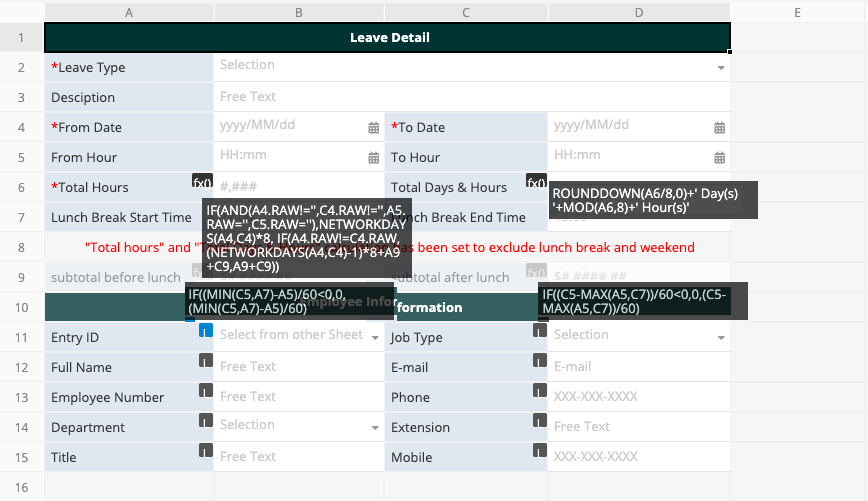
The Phone Book is a template under the Administration tab category rather than the HR tab. However it is actually a multiple versions sheet version of the Employment Management sheet, meaning multiple views of this form have been set up for different needs. The different versions all share the same data source and are linked to each other. The Employee Management sheet is used by the HR department, so it shows detailed personal information. On the other hand, the Phone Book was designed to allow employees to contact each other, so only the basic contact information is shown while the rest are hidden. You can also set different access rights for each multiple versions sheetversion.
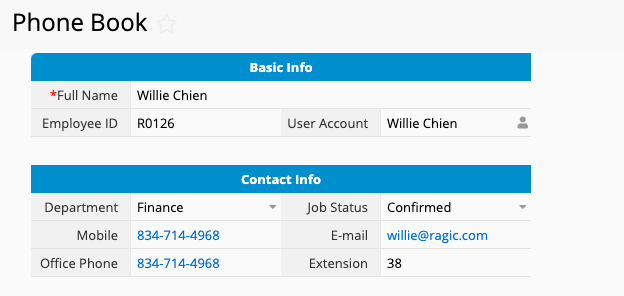
If you want to see the timesheet, overtime, and leave of absence information of each employee in their own Employee Management entry, you can do so by building a reference subtable. The subtable allows you to collect all information from other sheets that are related to a particular employee so you can see everything in one place.
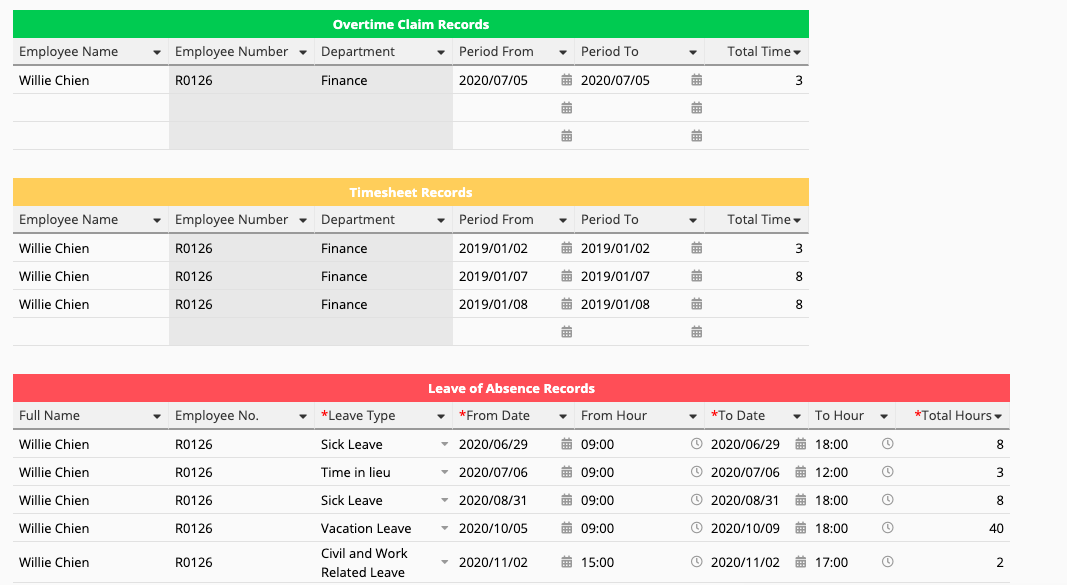
Well, what are you waiting for?
 Thank you for your valuable feedback!
Thank you for your valuable feedback!